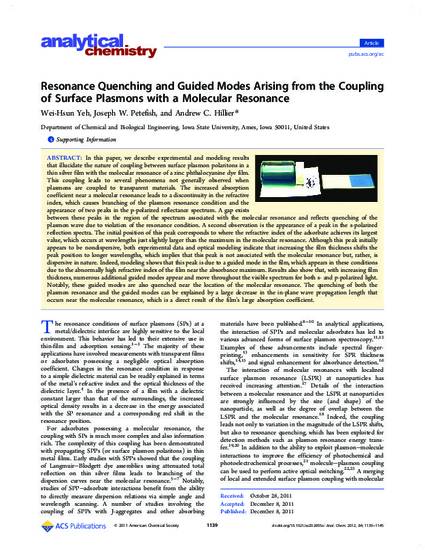
In this paper, we describe experimental and modeling results that illucidate the nature of coupling between surface plasmon polaritons in a thin silver film with the molecular resonance of a zinc phthalocyanine dye film. This coupling leads to several phenomena not generally observed when plasmons are coupled to transparent materials. The increased absorption coefficient near a molecular resonance leads to a discontinuity in the refractive index, which causes branching of the plasmon resonance condition and the appearance of two peaks in the p-polarized reflectance spectrum. A gap exists between these peaks in the region of the spectrum associated with the molecular resonance and reflects quenching of the plasmon wave due to violation of the resonance condition. A second observation is the appearance of a peak in the s-polarized reflection spectra. The initial position of this peak corresponds to where the refractive index of the adsorbate achieves its largest value, which occurs at wavelengths just slightly larger than the maximum in the molecular resonance. Although this peak initially appears to be nondispersive, both experimental data and optical modeling indicate that increasing the film thickness shifts the peak position to longer wavelengths, which implies that this peak is not associated with the molecular resonance but, rather, is dispersive in nature. Indeed, modeling shows that this peak is due to a guided mode in the film, which appears in these conditions due to the abnormally high refractive index of the film near the absorbance maximum. Results also show that, with increasing film thickness, numerous additional guided modes appear and move throughout the visible spectrum for both s- and p-polarized light. Notably, these guided modes are also quenched near the location of the molecular resonance. The quenching of both the plasmon resonance and the guided modes can be explained by a large decrease in the in-plane wave propagation length that occurs near the molecular resonance, which is a direct result of the film’s large absorption coefficient.
Available at: http://works.bepress.com/andrew_hillier/33/

This article is from Analytical Chemistry84 (2012): 1139-1145, doi:10.1021/ac202855a. Posted with permission.